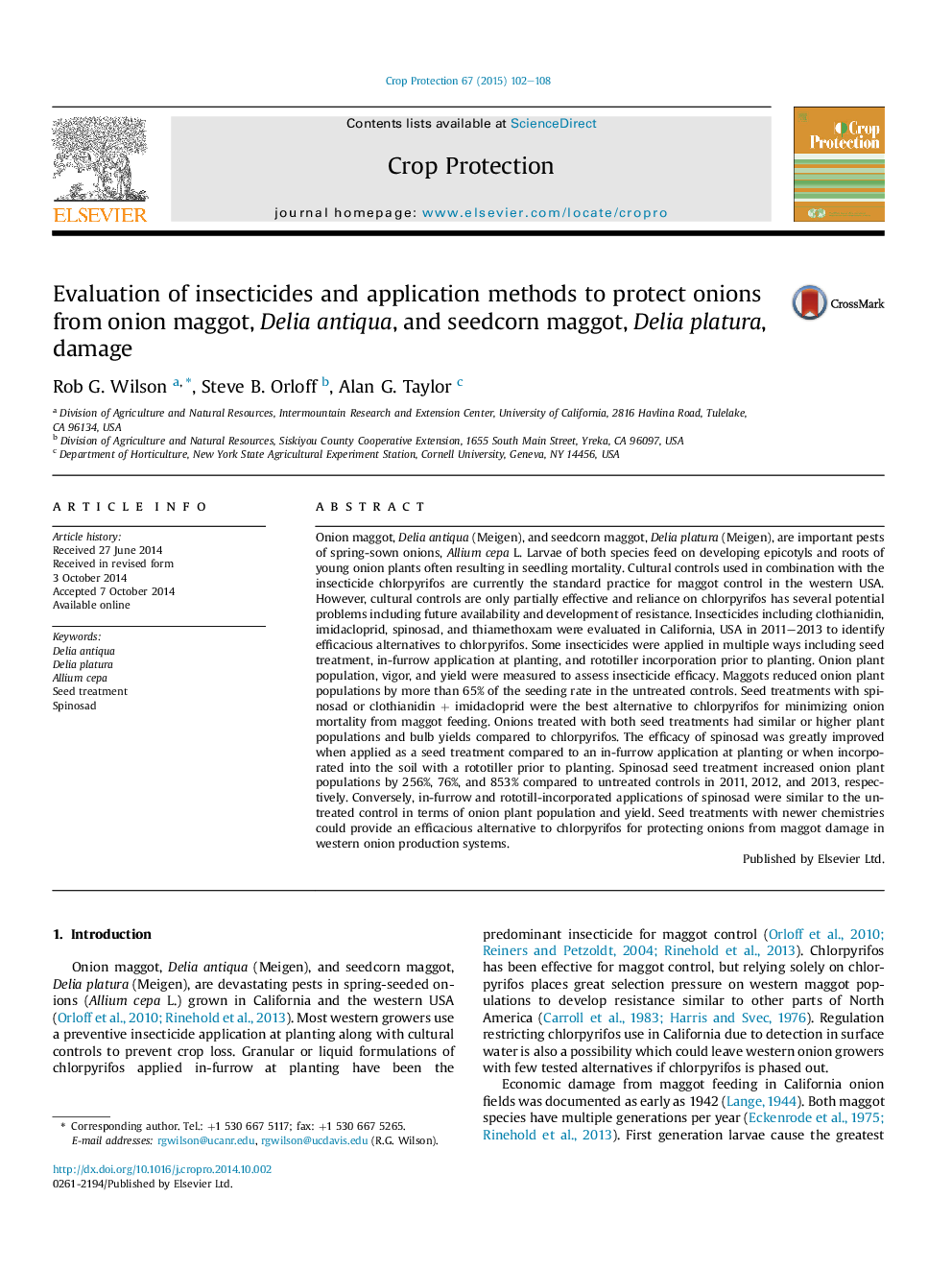| کد مقاله | کد نشریه | سال انتشار | مقاله انگلیسی | نسخه تمام متن |
|---|---|---|---|---|
| 6373546 | 1624320 | 2015 | 7 صفحه PDF | دانلود رایگان |
عنوان انگلیسی مقاله ISI
Evaluation of insecticides and application methods to protect onions from onion maggot, Delia antiqua, and seedcorn maggot, Delia platura, damage
دانلود مقاله + سفارش ترجمه
دانلود مقاله ISI انگلیسی
رایگان برای ایرانیان
کلمات کلیدی
موضوعات مرتبط
علوم زیستی و بیوفناوری
علوم کشاورزی و بیولوژیک
علوم زراعت و اصلاح نباتات
پیش نمایش صفحه اول مقاله

چکیده انگلیسی
Onion maggot, Delia antiqua (Meigen), and seedcorn maggot, Delia platura (Meigen), are important pests of spring-sown onions, Allium cepa L. Larvae of both species feed on developing epicotyls and roots of young onion plants often resulting in seedling mortality. Cultural controls used in combination with the insecticide chlorpyrifos are currently the standard practice for maggot control in the western USA. However, cultural controls are only partially effective and reliance on chlorpyrifos has several potential problems including future availability and development of resistance. Insecticides including clothianidin, imidacloprid, spinosad, and thiamethoxam were evaluated in California, USA in 2011-2013 to identify efficacious alternatives to chlorpyrifos. Some insecticides were applied in multiple ways including seed treatment, in-furrow application at planting, and rototiller incorporation prior to planting. Onion plant population, vigor, and yield were measured to assess insecticide efficacy. Maggots reduced onion plant populations by more than 65% of the seeding rate in the untreated controls. Seed treatments with spinosad or clothianidin + imidacloprid were the best alternative to chlorpyrifos for minimizing onion mortality from maggot feeding. Onions treated with both seed treatments had similar or higher plant populations and bulb yields compared to chlorpyrifos. The efficacy of spinosad was greatly improved when applied as a seed treatment compared to an in-furrow application at planting or when incorporated into the soil with a rototiller prior to planting. Spinosad seed treatment increased onion plant populations by 256%, 76%, and 853% compared to untreated controls in 2011, 2012, and 2013, respectively. Conversely, in-furrow and rototill-incorporated applications of spinosad were similar to the untreated control in terms of onion plant population and yield. Seed treatments with newer chemistries could provide an efficacious alternative to chlorpyrifos for protecting onions from maggot damage in western onion production systems.
ناشر
Database: Elsevier - ScienceDirect (ساینس دایرکت)
Journal: Crop Protection - Volume 67, January 2015, Pages 102-108
Journal: Crop Protection - Volume 67, January 2015, Pages 102-108
نویسندگان
Rob G. Wilson, Steve B. Orloff, Alan G. Taylor,